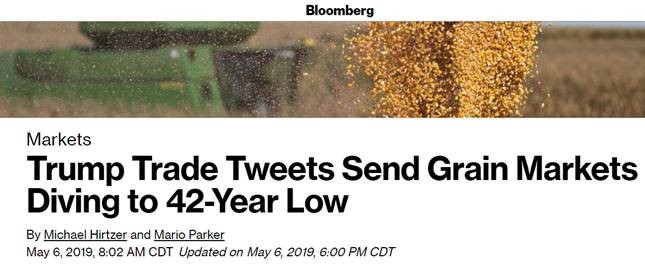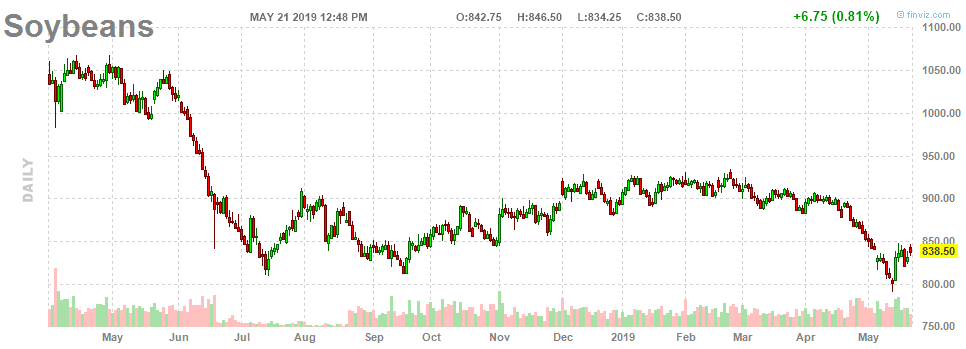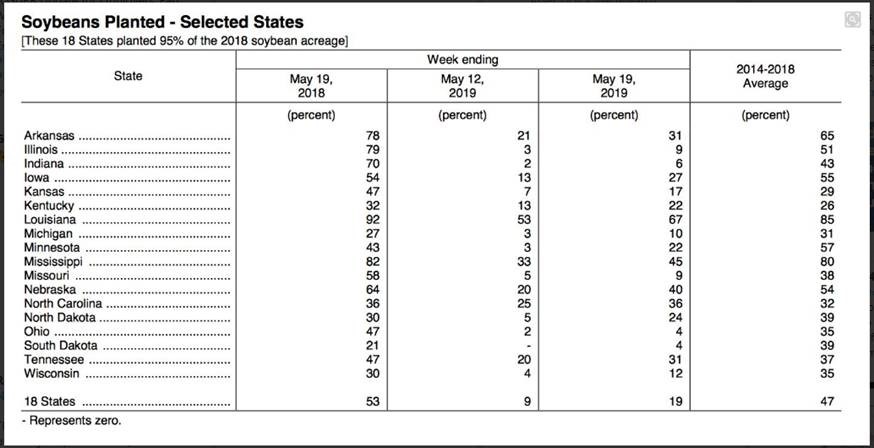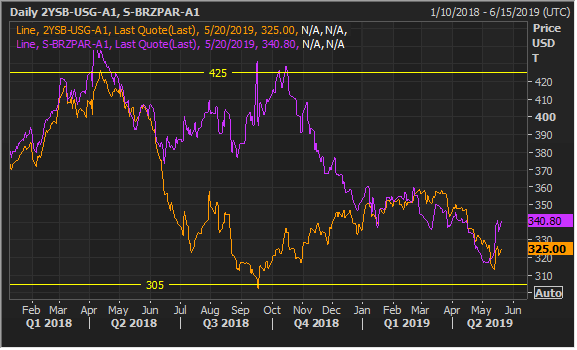Sure is tough to be an American farmer these days, with headlines like this popping up around President Trump’s ongoing trade war with the Chinese:

Nowhere is this pain being felt more than in the Soybean market, which is the second largest financially important crop in the U.S., with $41 Billion with soybeans grown in 2017 behind Corn at $48 billion. China is the world’s biggest importer and America’s largest customer in a trade worth $14 billion in 2017. But while it makes for a good headline, that 42-year-low was only about 10% lower than where the market had been a few weeks prior, and only about 3% lower than where prices headed after the initial skirmishes in the trade war last summer. In more finance geek speak – this is not a black swan event, as we’ve known about this market risk since at least May of 2018.

But that doesn’t leave the farmers in any better of a place, especially with all of the rain and wet conditions that have been seen across the Midwest, and we’re seeing that in terms of acres of Soybeans being planted dropping significantly. Here’s the USDA showing just 19% of the Soybean crop is in the ground so far, compared with 47% usually seen by this time of year on average between ’14 and ’18.

We caught up with Doug Bergman, the head of RCM’s AG Trading desk and publisher of daily Ag research for his thoughts on the choices facing the nation’s Soybean farmers:
In my opinion, the easiest way to see the impact is to look at the cash soybean price in Brazil (purple line) vs. cash bids in the US (orange line). You can see the dramatic drop in U.S. prices vs. Brazil last spring and then a small move that started just recently when news broke that a trade deal was not likely to get done. Beyond that, there is a lot of uncertainty regarding another round of government support and what farmers should decide to plant this spring. Planting is delayed due to wet weather, which is leading many to consider taking preventive planting insurance payments. If there is another round of government support payments, the producers that took an insurance payment rather than raise a crop would be left out of the government payment. So do you take the lower risk approach and collect insurance to maybe breakeven, or do you plant beans into less than ideal conditions expecting another government bailout where if the weather cooperates this summer could end up being profitable.

Disclaimer
The performance data displayed herein is compiled from various sources, including BarclayHedge, and reports directly from the advisors. These performance figures should not be relied on independent of the individual advisor’s disclosure document, which has important information regarding the method of calculation used, whether or not the performance includes proprietary results, and other important footnotes on the advisor’s track record.
Benchmark index performance is for the constituents of that index only, and does not represent the entire universe of possible investments within that asset class. And further, that there can be limitations and biases to indices such as survivorship, self reporting, and instant history.
Managed futures accounts can subject to substantial charges for management and advisory fees. The numbers within this website include all such fees, but it may be necessary for those accounts that are subject to these charges to make substantial trading profits in the future to avoid depletion or exhaustion of their assets.
Investors interested in investing with a managed futures program (excepting those programs which are offered exclusively to qualified eligible persons as that term is defined by CFTC regulation 4.7) will be required to receive and sign off on a disclosure document in compliance with certain CFT rules The disclosure documents contains a complete description of the principal risk factors and each fee to be charged to your account by the CTA, as well as the composite performance of accounts under the CTA’s management over at least the most recent five years. Investor interested in investing in any of the programs on this website are urged to carefully read these disclosure documents, including, but not limited to the performance information, before investing in any such programs.
Those investors who are qualified eligible persons as that term is defined by CFTC regulation 4.7 and interested in investing in a program exempt from having to provide a disclosure document and considered by the regulations to be sophisticated enough to understand the risks and be able to interpret the accuracy and completeness of any performance information on their own.
RCM receives a portion of the commodity brokerage commissions you pay in connection with your futures trading and/or a portion of the interest income (if any) earned on an account’s assets. The listed manager may also pay RCM a portion of the fees they receive from accounts introduced to them by RCM.
See the full terms of use and risk disclaimer here.

